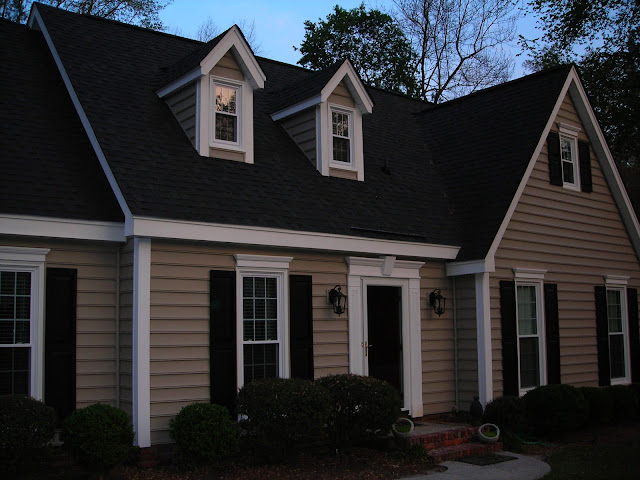Here are two typical roof problems that home owner can check.
1. Roof Leak
Leaks are the most prevalent roofing problem in any part of the world. Large roof leaks may ruin your home's ceilings, walls, rafters, carpets, wooden floors, and furnishings, while little leaks might go undetected for a long time but still harm over time.
>> Related Post: Residential Flat Roof Disadvantages.
The most common source of roof leaks is not the roof itself but the seams and joints where various roof sections meet. These connections are prone to leaks.
Areas to look for signs of roof leaks:
Flashing around your chimney
Connections between overlapping roof panels
Boxed gutters
Flashing around your roof's chimney, vent pipes, skylights, and any other point of international.
The most common cause of a leak I see is where a boot around a pipe fails. A boot is a type of roof flashing that goes around the base of the pipes coming out of your roof and waterproofs them.
>> Related Post: Guidelines for Maintaining Your Roof.
There are different kinds of boots a roofer could use such as lead, plastic, copper, etc. Whatever the material, the main job of a pipe boot is to stop water from following the pipe down through your roof and into your home.
For this kind of leak, I chose the synthetic rubber boot I see fail most frequently, a neoprene pipe boot. UV from the sun breaks down the neoprene and it cracks. Once it cracks, water will run down into a closet, kitchen, bathroom, or wherever you have the pipe coming out of your roof.
Pipe boots will not last the life of the roof. Manufacturers have changed the compound over recent years, but it still will not outlast your shingles.
The pipe boot should last around 10 years, but different factors (location, weather, animals) will ultimately decide how long one will last.
2. Sagging or Distorted Roof
Look at the angles of your roof to check if there are any drooping or distorted spots. Visually inspecting all regions of your home may be challenging due to its unique layout and construction. If one of these situations applies to you, it's time to call in a professional roof inspector.
>>Related Post: Tips to work with your insurance on roofing claim.
Your deteriorating roof requires quick repair. Damage to the structure is possible if the roof begins to droop.
A skilled roofer can correct the sagging by repairing the rafters or other supporting structures and addressing the underlying problem.
Roof leaks, the natural breakdown of materials over time, and poor design are all potential causes of sagging. The weight of snowfall may also pressure a roof, causing it to slump.
Your roof may need more bracing or new rafters, which may be installed by a professional. There's a chance they'll need to jack the roof up from the interior before they can put in new rafters or brace.
Fixing a roof that is sagging isn't an easy or quick task by any means. If you're not confident about how to fix a sagging roof on an old house or any house in general, then it's a good idea to call up a professional that knows about sagging roof repair.
>> Related Post: Introducing CRM roofing: The ultimate solution for roofing durability.
If you're trying to figure out how to fix a sagging roof on your own, here is one way to go about it.
Steps on how to jack up a sagging roof:
First, attach 2 chains from one side of the wall to the other side using lag screws with large washers. While it's possible to just use one chain, it might be better to use two that are spread out evenly in order to spread out the force in case they try to move away. Then, add a turnbuckle between the chains in order to adjust the tension on them.
Use a jack-and-post system to slowly jack up the ridge beam. Set up two jacks and posts so that they're evenly spread out from one another in the middle, below the roof ridge beam. Slowly jack up the roof ridge and then tighten the chains each time you jack it up.
Continuously repeat this process until you are done. You should only jack up the ridge 1" per day since anything more than that can cause damage to your roof structure.
As you can see this is not a fast process and it can take up anywhere between 1-2 weeks to fix it.
In order to prevent it from sagging again, add ceiling joists or rafter ties if you don't already have them. They help provide extra support to the rafters.
You can also provide support to the ridge if you add two 2x4 boards on top of the ceiling's joists and nail them directly to the ridge. This is one of the most common ways on how to fix a sagging roof ridge beam.
Conclusion
Swadley Roof Systems offers the best roofing services in the Houston, Austin, San Antonio and Dallas area.
- Tel: 832-559-8463
- Email: info@swadleyroofsystems.com
- Location: 17413 FM 2920 Suite O Tomball, TX 77377
- Facebook: Fanpage Swadley Roof Systems
- Website: https://www.swadleyroofsystems.com/







0 Comments
Đăng nhận xét